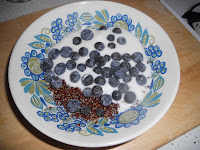It’s that time of year again when everyone is talking about their resolutions or avoiding them altogether. A resolution is a goal or intention you set for yourself for changes you would like to make in your life.
For many years on New Year’s Eve my daughters and I would sit down and write our resolutions for the next year, they were usually the same things year after year because I never made a plan for how to accomplish any of the changes I wanted to make.
The resolutions were so broad and open-ended such as; get a better job, pay off credit cards, lose weight, be a better parent, eat better etc. These were all well intentioned and I probably changed my food for a day or a week and I may have exercised for a few days but that was the end of it. What I really perpetuated more than anything was the feeling of failure - that I wasn’t able to keep the resolutions. So I pushed them aside and kept on the same path I had been on the previous year of over eating, being too sedentary, over spending etc.
This year my first intention is to create resolutions that I can maintain and work towards in order to feel joyful about the New Year and the new goals I am accomplishing. In order to be successful I have to break down the general goals into manageable pieces that I can work towards a little at a time. Remember, it is the small changes that build up over time that make the difference.
These 7 steps will give you a road map for creating success with your resolutions.
Write your goals in the present tense so that your mind /unconscious sees this as happening and will work towards it. If you put the goal in the future tense then your unconscious will keep thinking it is something happening in the future.
7 Steps to Creating Attainable Resolutions
2. Refine your goal
3. Make your goal very specific
4. Visualize each day how you will feel once this goal is complete. Become comfortable with that feeling so you can remember it anytime you want.
5. Create a game plan – write it down
6. Determine how you will measure your success
7. Periodically (monthly or weekly) reevaluate the goals to determine if it is still realistic or needs to be redefined.
Here is a sample of how to work these
7 Steps to Creating Attainable Resolutions
regarding paying off credit cards
1. Define your goal
I am paying off my credit cards.
2. Refine your goal
I am creating financial abundance and more peace of mind.
3. Make your goal very specific.
I am earning $12,000 more this year, $1000 a month.
4. Visualize each day how you feel once this goal is complete. Become comfortable with that feeling so you can remember it anytime you want.
Feeling the excitement at paying off the credit card and having enough money to do fun things.
5. Create a game plan
I am doing 3 things each day that lead me towards creating more money. Such as submitting proposals, advertising, making cold calls, applying for a new job, getting a part time job etc.
6. Determine how you will measure your success
I know I am working towards success as I make payments that are more than the minimum without creating additional credit card charges.
7. Periodically (monthly or weekly) reevaluate the goal to determine if it is still realistic or needs to be redefined.
I am failing at doing 3 things each day and need to be more realistic in doing two things each day. Or I have earned enough money to pay off all my credit card charges; do I want to create a new goal or intention?
Here is another sample of how to work these
7 Steps to Creating Attainable Resolutions
regarding losing weight
1. Define your goal
I am losing weight
2. Refine your goal
I feel good about the size and shape of my body.
3. Make your goal very specific
I am losing 25 pounds and becoming more physically fit
4. Visualize each day how you will feel once this goal is complete. Become comfortable with that feeling so you can remember it anytime you want.
I am feeling joy each time I look in the mirror, I love all the compliments and the way my clothes fit.
5. Create a game plan - start with something small and manageable
I am eliminating junk food, especially in the late afternoon and replacing it with apples, nuts or other whole foods. Six days a week I will do some form of exercise, weights, running, walking, or yoga for a minimum of 20 minutes.
6. Determine how you will measure your success
With each pound shed I know I am working towards my goal. With each 5 pounds shed I will do something special for myself like get a massage, buy a small piece of jewelry or go to a movie.
7. Periodically (monthly or weekly) reevaluate the goal to determine if it is still realistic or needs to be redefined.
I am successful with eliminating the afternoon junk food binges so now I am going to eliminate bread at lunch and dinner.
I have lost all 25 pounds and want to keep up my exercise program and healthy eating.
Find a partner to share your resolutions with, someone to share the ups and downs with as you travel this journey to a Successful and Happy New Year.
Hugs,
Helen
Click here to download the 7 Steps worksheet







